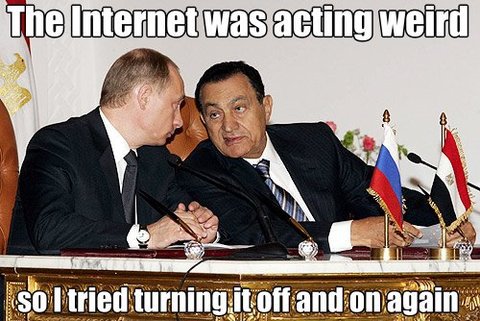With disarray information coming out of Turkey during the military coup (apparently unsuccessful) we see the same pattern of trying to control the media as we have seen for the last 500 years, in peace and in wartime. Revolutions come quickly or slowly, violently or peacefully, but they always follow the same pattern of trying to control and distort the truth -. Only technology differs from more than 500 years
The reason is that people power rally centralized information bottlenecks to cut and control the flow of information and to refuse ability to spread to other, while challengers are using the power of many, many volunteers to build a decentralized information flows around these bottlenecks. When this happens, challengers typically earn. This was repeated coups in situations please with the printing press, with brochures, newspapers, and now, with the Internet and social media. It has also been used in more or less democratic contexts where an institution collectively tried to evade a challenger, from a century ago.
Some would say it is ironic that Turkish ruler Erdoğan has used social media last night called for people to rally against the coup. Rather, it is entirely consistent with the idea that all media must be strictly controlled by a few people in power. Erdoğan has used social media to spread his messages, which does not contradict the previous actions of the same capacity limitation everyone. This is perfectly in line with the actions of historical autocratic leaders disabling Facebook and Twitter, except for use by the sovereign.
Let's look at some of these models.
the printing press and the religious wars in the 1500s
Before the printing press was invented by Gutenberg in 1453, the Catholic Church was the knowledge chokepoint in Europe. It produces all written knowledge in monasteries, and circumvention of this chokepoint had to rely on the ineffective oral tradition and transmission - tell people to each other across generations and across the distance, essentially playing phone. The Church also wrote all his knowledge of Latin, which was easily accessible by the common people and thus needed even local preachers to translate knowledge into the local language.
The press was not as much a new invention because it is the very successful combination of four inventions: movable metal type based paper clothrag-cheap, based inks oil, and the compression press; with some auxiliary inventions, like the mold at the Gutenberg hand that allowed for the rapid manufacture of movable metal and therefore profitability.
Paradoxically, Gutenberg press was convinced would be strengthen the Church, it would reduce the copy errors between Bibles significantly - all books are in fact identical. The result was exactly the opposite, many thanks to the footwork of Martin Luther, who objected to certain abuses of power of the Church - abuses enabled by their chokepoint on information and the media at the time. Specifically, they sold the salvation to raise funds, something that was not in the books - and being a clergyman, Luther knew and opposed it
The objection this man triggered a century of civil war. worldwide known at the time - vaguely described as the 1524-1648 years. In particular, it was triggered by the Luther Bibles, where Luther Bibles printed in German and French , and distributed by the cartload - immediately revoke the chokepoint media previously owned by the Catholic Church, an action which upset the balance of power so it led to a century of brutal war.
In this century, we can see a wide selection of leaders are trying a range of actions against challengers to power, and they are all directed to control the idea -distributing technology, rather than provide superior ideas . In this, the Church and the Crown often worked in tandem to defend their interests against the dangerous new technology.
In 1526 the Swedish king Gustav Vasa founded the Swedish Royal Printing (kungliga Tryckeriet) , which had an absolute monopoly of printing anything and everything. No other print shops were allowed at all. In this way, the Crown could control the ideas could be disseminated quickly. It was a moderate success.
France, meanwhile, has not been so successful. He tried to eliminate the technology altogether, gradually ratchet penalties for the use of a new technology until January 13, 1535, the penalty for using a printing press struck death penalty by hanging. The official justification, which can still be found in law journals, was that this drastic measure was necessary "to prevent the spread of dangerous ideas," phrases as "lies" and / or "harmful information." This measure has not work at all - once ordinary people had tasted the knowledge of reading, there was not unlearn this experience, and bookstores described the France like a pearl necklace, with books of all flavors arriving by its borders
Arguably the most successful new shutter ideas of that time was Queen Mary I of England, who - despite a brief reign between 1553 and 1558 - created an alliance against commercial nature between the printer Guild ( "London Company of Stationers") and the Crown: in exchange for a trade monopoly on printing, Crown censors would receive the opportunity to inspect all parts before printing. This monopoly was established May 4, 1557, although amended and revised, it remains to this day - as we know Copyright , which is a term originally used in society London of Stationers. Queen Mary I used this successfully mechanism to persecute political and religious dissidents, something that earned him later, ekename Bloody Mary.
Journals 1700-100
After all the leaders had fought the printing press with variable success, back to France, which was probably the less successful. In 1789, July 14, ordinary people stormed the prison where political prisoners were held, which was the point of departure of the French Revolution - something nobility and royalty deeply feared might happen to their country, too . Robert Darnton, professor of history focusing on the history of said information from the French Revolution
The revolution tore [the slow patchwork of the Old Regime] to bits, and rubble rebuilt something new - the French nation. The press was the crucial instrument in this process. Without the press, the revolution was impossible and unthinkable.
At that time, the newspapers had begun to take root in England and elsewhere (originally in Venice), but have been subjected to pre-publication censorship as mandated by the laws that we know aujourd 'hui as copyright. Overbroad by the authorities to try to capture printed documents under the system of copyright has led to the huge importance Entick English case vs Carrington in 1765, which established in common law that the authorities lack the power that not expressly provided in the law. Thus, this case has expanded the Roman principle of Nulla poena sine lege (everything not prohibited is permitted for the common citizen) with its more important than all the executive power are not explicitly given AUTHORITY is prohibited by law. This important principle followed the founding of the United States a few decades later and the drafting of its Constitution, and shows how the authorities were eager to go too far to control the flow of information - as in France in 1535, to prevent someone one else to present their version of events.
other advanced trying to create freedom of information as something positive. In 1766, Sweden and Finland, have created one of the first constitutions in the world, guaranteeing freedom of the press censorship, although the king retained the right to revoke publishing licenses after the fact.
The 100
While European countries moved progressively to forms of democracy more inclusive, some parts of the establishment refused to give challengers access to information bottlenecks - which, at the time, were printing a newspaper store. Taking Sweden as an example again, emerging Social Democratic Party - similar to the work in the UK, and unique to the United States - were denied business every print shop in the country in the early 100 the establishment held bottlenecks. Instead, the activists had their newspapers printed in neighboring Denmark took them through the Strait in Sweden by boat, and were distributed by a network of volunteers - bypassing the chokepoint. (Although this is hardly a coup as such, it is always about a property being ousted from power, and thus the game dynamics are similar enough to learn a lot.)
A similar thing happened during WWII. When setting up in Sweden felt embarrassed by the Communist newspaper Flamman , they could not prohibit printing due to the constitution in 1766 press freedom. The establishment has circumvented this in place the prohibition of transport Communist newspaper on trains and buses, preventing the newspaper from reading its readership.
In this, the establishment had identified a new centralized chokepoint - the railways - that the challengers could be denied access. And in response, the challengers again formed a network of volunteers distributed to bypass the chokepoint fully
This singular episode -. An institution bypassing questionably its constitution by referring to the strange laws out of the air to prevent the challengers to reach potential supporters -. many, many parallels in modern times
Internet time
the same mechanisms remain to this day, although the Internet has replaced the release of impression. The social dynamics around power in society has not changed one iota in the last 500 years.
A good example is the Arab Spring there a few years, when activists together across borders to accomplish many things. As unrest continued to rise in Egypt catalyzed by social media and the organization on the net, then president Mubarak has used the fact that there were only a few ISPs nationwide to all closed down, having identified a chokepoint information.

When this happened, activists around the world sprang into action, implementing the old analog modem pools that people in Egypt could call directly to the using old phone line modems. In this way, a distributed effort has bypassed the media chokepoint and let people distribute information widely, against the wishes of those in power.
There is also an interesting detail about the pictures of events from that time. As highlighted Slim Amamou, who was briefly secretary of state in Tunisia: take pictures of events such as this was highly illegal and dangerous, but everyone did it anyway to spread the word of this was happening. And there are other notable thing with these images. They contain other people doing the same thing
In this, the pictures of the Arab Spring demonstrations have instructions on how to pursue autonomous events. This was something quite new and this pattern was seen in Egypt, Tunisia and throughout the Arab Spring.

Conclusion
there really is not much new under the sun when it comes to institutions that protect their own power. The more you study information warfare throughout history, from Roman times and beyond, the consistent observation is that people in power consumption as the power to maintain and extend this power.
At present, it is not only our capacity, but almost our duty to save our freedom by the delivery of our Internet traffic so that those in power expects or wants. A VPN is such a path. TOR execution is always another. Set up a digital output node is to help others do
Remember, freedoms are like muscles :. They must be exercised regularly and in full, even to a certain degree of discomfort - or they atrophy, wither, and die.
privacy and information both remain your own responsibility.

0 Komentar